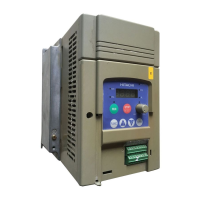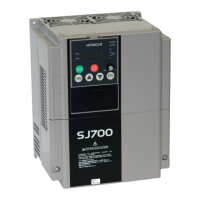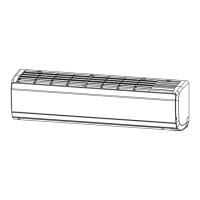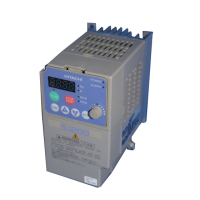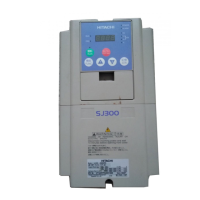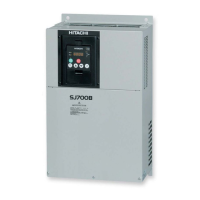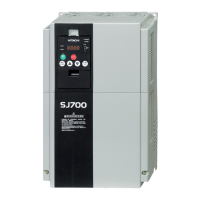Using Intelligent Input Terminals
Operations
and Monitoring
4–10
External Signal for DC Braking
When the terminal [DB] is turned on, the DC
braking [DB] feature is enabled. Set the
following parameters when the external DC
braking terminal is to be used:
1. A53 – DC braking delay time setting. The
range 0.1 to 5.0 seconds.
2. A54 – DC braking force setting. The range
is 0 to 100%.
The scenarios to the right help show how DC
braking works in various situations.
• Scenario 1 – The [Fwd Run] or [Rev Run]
terminal is On. When the [DB] terminal is
On, DC braking is applied. When the [DB]
terminal is Off again, the inverter output
ramps to the previous frequency.
• Scenario 2 – The Run command is applied
from the operator keypad. When the [DB]
terminal is On, DC braking is applied.
When the [DB] terminal is Off again, the
inverter output remains Off.
• Scenario 3 – The Run command is applied
from the operator keypad. When the [DB]
terminal is On, DC braking is applied after
the delay time set by A53 expires. The
motor is in a free-running (coasting) condition. When the [DB] terminal is Off again,
the inverter output remains Off.
time
Output
frequency
[FW, RV]
(Run terminal)
[DB] terminal
Scenario 1
time
Output
frequency
Run command
from operator)
Scenario 2
time
Output
frequency
Scenario 3
[DB] terminal
[DB] terminal
delay
A53
Run command
from operator)
Option
Code
Terminal
Symbol
Function Name
Input
State
Description
07 DB External Signal for
DC Injection Braking
ON applies DC injection braking during deceleration
OFF does not apply DC injection braking during
deceleration
Valid for inputs:
C01, C02, C03, C04, C05, C06
Required settings:
A53, A54
Notes:
•
Do not use the [DB] input continuously or for a
long time when the DC braking force setting A54 is
high (depends on the motor application).
•
Do not use the [DB] feature for continuous or high
duty cycle as a holding brake. The [DB] input is
designed to improve stopping performance. Use a
mechanical brake for holding a stop position.
P24
1236 45L
Example:
FWRVDB
See I/O specs on page 4–5.
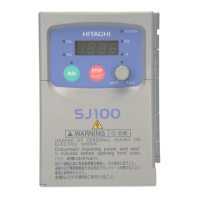
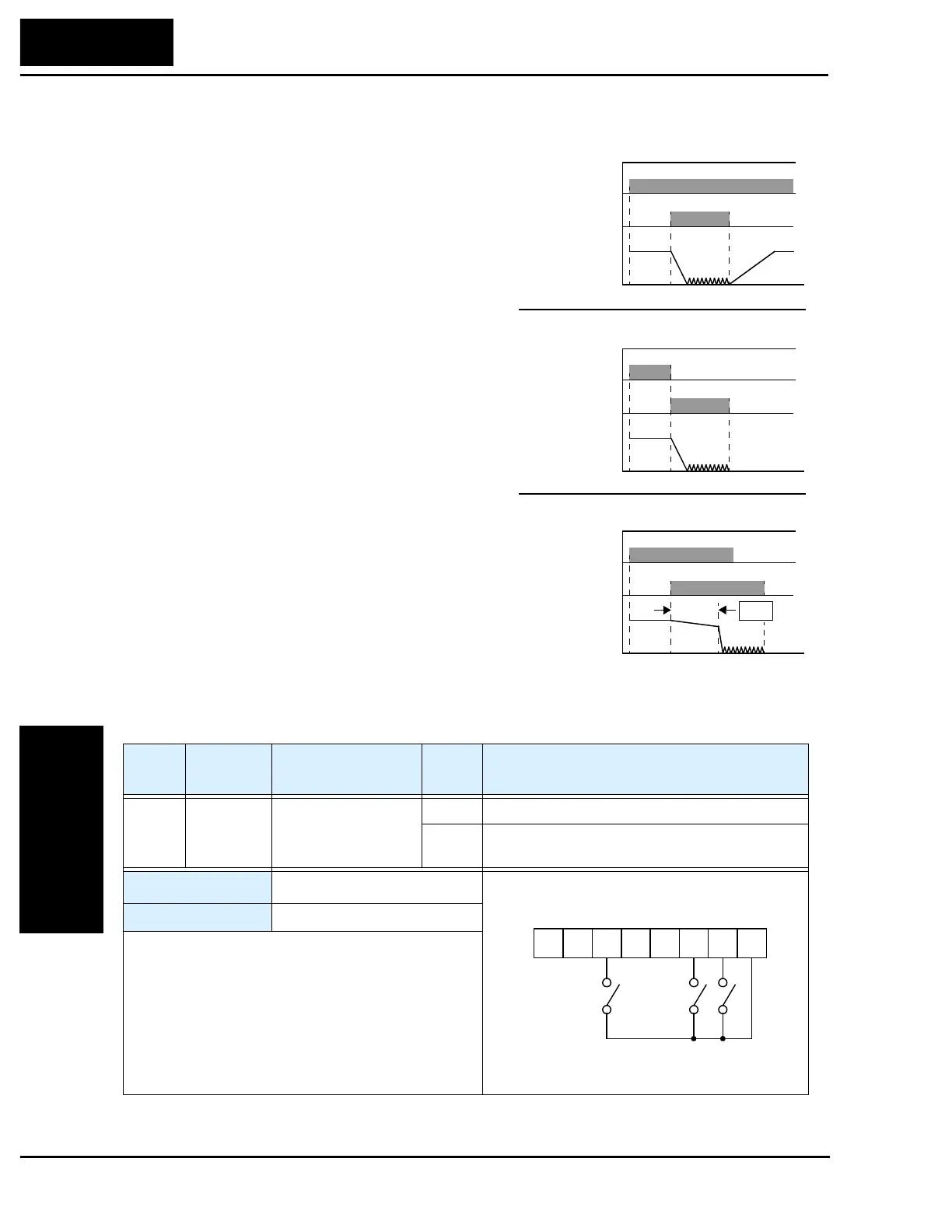